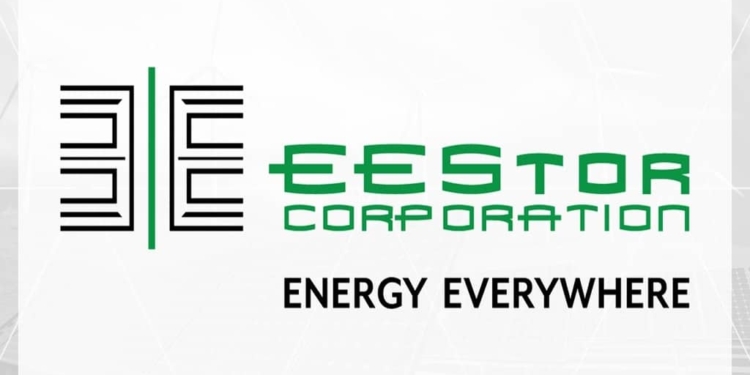Source: EEStore news
Toronto, ON – January 23, 2019 — EEStor Corp. (TSXV:ESU) (“EEStor” or the “Company”), developers of high energy density, solid-state capacitors, is pleased to announce an update to shareholders from Ian Clifford, CEO.
Over the past year, EEStor has achieved a number of milestones which have both strengthened our company and enhanced our future prospects.
EEStor is focused on both the capacitor industry and energy storage industry. EEStor is developing new types of ceramic and polymer-based solid-state capacitor materials with the ultimate goal of replacing conventional battery technologies (lead acid and lithium-ion) with capacitors built with EEStor’s materials. This new generation of high energy density, low cost capacitor material is based on EEStor’s CMBT (Composition Modified Barium Titanate) ceramic dielectric powder.
Titanium and Barium are among the most common elements on earth. Titanium is the ninth and Barium the fourteenth most abundant element. By comparison, lithium and cobalt (used in the production of lithium-ion batteries) are 32nd and 33rd in abundance.
Ceramic capacitors offer the notable benefits of extremely fast charging. In electronic devices they can charge and discharge millions of times per second. They also exhibit extremely long lifespans, lasting decades instead of a few hundred to a thousand cycles of charge/discharge offered by current commercial battery technology. EEStor’s goal is to bring quick charging, long lifespan, and low monetary and environmental cost storage to the electrical grid and transportation markets.
For transportation storage, the ultimate long-term goal is to be able to charge any electric vehicle in a matter of minutes, while also having the energy storage unit potentially outlast the vehicle by decades. EEStor’s nearer term objective, however, is to target global electrical distribution systems. In other words: The Grid. The electrical energy storage systems required for the grid need to be long lasting, of low cost, and be able to charge and discharge at electronic speeds. These features will enhance the intermittent nature of solar and wind electricity availability. With the very long lifespan offered by EEStor’s CMBT-based capacitors, these massive energy storage systems could be financially amortized over many decades.
To evaluate energy storage capacity, the industry uses a factor called “energy density” (or ED), which is measured in “watt hours per liter” (Wh/l). Broader applications are enabled with higher levels of energy density, as illustrated in the table below. (Note that this table applies for the whole industry and is not specific to current EEStor performance)
| Energy Density (Wh/l) | Applications |
| Greater than 0.5 | Size and cost competitive for existing capacitors |
| Greater than 10 | Enables short duration electric grid energy storage, for the balancing of production and distribution of electricity in utility companies’ grid. |
| Greater than 40 | Enables Lead-acid battery replacement |
| Greater than 250 | Enables Lithium-ion battery replacement |
A second factor used by the industry, called “insulation resistance”, indicates how long the energy can be kept in storage without it leaking out. The leakage must be as low as possible for effective energy storage.
EEStor disclosed a factor of 5 Wh/l with its polymer program in Phase 6 report in January 2018, but the leakage was too high for effective energy storage. It also disclosed an ED of 1.4 Wh/l with low leakage in its glass program in its Phase 8 report in March 2018. All results have been verified by three independent testing companies in the USA: Intertek Group, MRA Labs, and Radiant Technology. As the table above suggests, the performance of EEStor technology disclosed in these press releases is not yet high enough to target EEStor’s long-term goals in energy storage applications. However, these established performance levels are more than sufficient to aggressively target many current capacitor applications. In early 2018, EEStor started to focus its efforts on commercializing the performance it had already achieved, by licensing its CMBT to key players in the capacitor industry. The goal is to enable commercialization in several subsegments of the capacitor market (as further described below), where EEStor’s CMBT materials have notable performance advantages.
It is important to understand that the energy density factor mentioned above is also a measure of economic efficiency of any storage solution. The higher the energy density, the lower the volume of material it takes to store a given amount of electricity. A device using a high-ED dielectric requires much less material for the same performance. Lower material volume combined with lower raw material costs from abundant supplies position EEStor’s CMBT as a low-cost alternative to existing capacitor solutions. This is especially true in the capacitor markets, which are almost entirely cost driven commodity markets.
The latest disclosed EEStor Phase 7 (February 2018), Phase 8 (March 2018) and Phase 9 (November 2018) test results, indicate it is well positioned to commercialize its material and to aggressively compete in 3 subsegments of global capacitor markets:
- Aluminum Electrolytic Capacitors (US$4.6B in 2018, and US$5.5B by 2022)2
- Plastic film capacitors (US$2.3B in 2018, and US$2.7B by 2023) 3
- Decoupling MLCCs (multi-layer ceramic capacitors; US$1.5B in 20184)
Together these represent a total current addressable market of $8.4B in 2018. These large opportunities are the main focus of EEStor’s latest months of efforts in licensing its capacitor material. The entire global capacitor market is currently estimated at US$25.5B per year5.
To summarize, the main advantages that EEStor materials bring to potential partners (as highlighted in detail in our published white papers and market reports) are:
High energy density: EEStor’s CMBT has achieved energy densities that are 5 to 100’s of times higher than various materials currently used in existing high voltage capacitor industries.
Lower cost: EEStor’s higher energy density means less material, which is both cheaper and more abundant and can be used in manufacturing equivalent capacitors significantly lowering the final production costs for similar performance.
Long product life: EEStor’s pure solid-state ceramic solutions have significant lifespan advantages over existing technologies in many of its target capacitor submarkets (e.g., Aluminum Electrolytic Capacitors typically fail over time due to leaking electrolytes).
Green footprint: EEStor’s CMBT can help the capacitor industry reduce its environmental footprint by reducing raw material requirements, using abundantly available feed stocks, and by eliminating the use of toxic materials. CMBT is environmentally friendly, as no toxic liquids or raw materials are used in its production.
The management of EEStor is in discussions with potential industrial joint venture partners and will announce the specifics of these discussions once they reach the stage of required disclosure. We look forward to providing further updates and thank you for being a shareholder of EEStor, for taking the time to read this update and for your continuing support of our effort
































